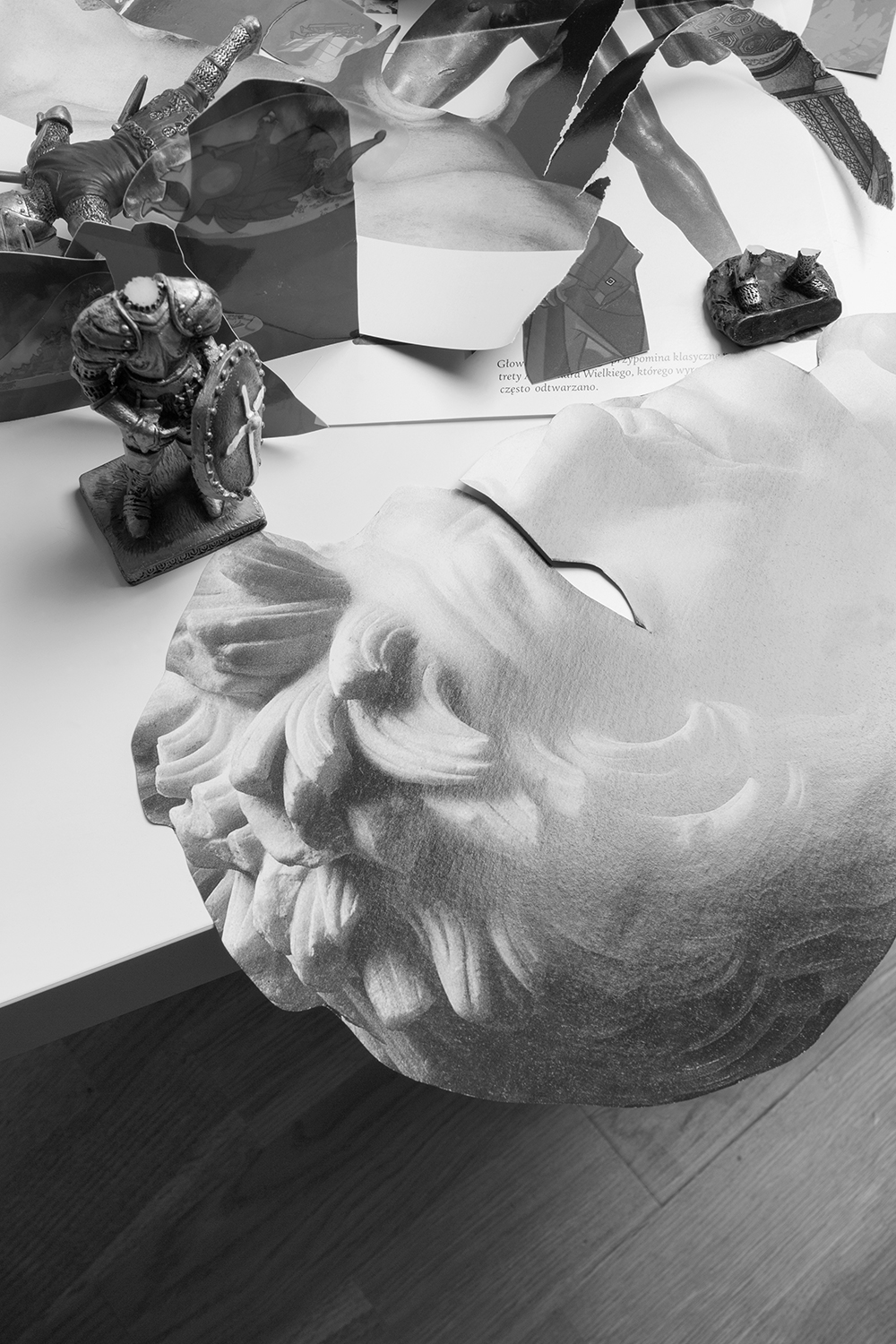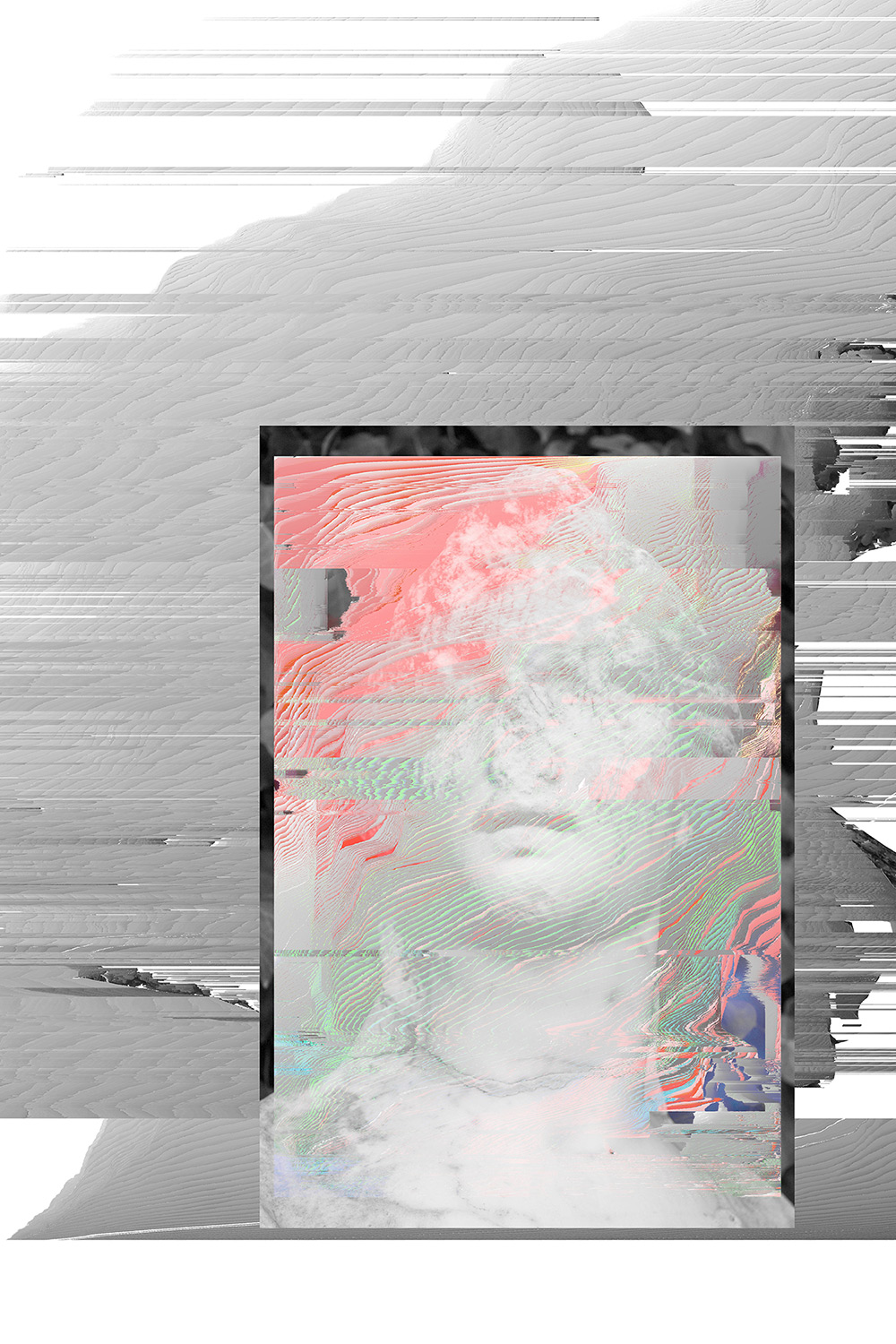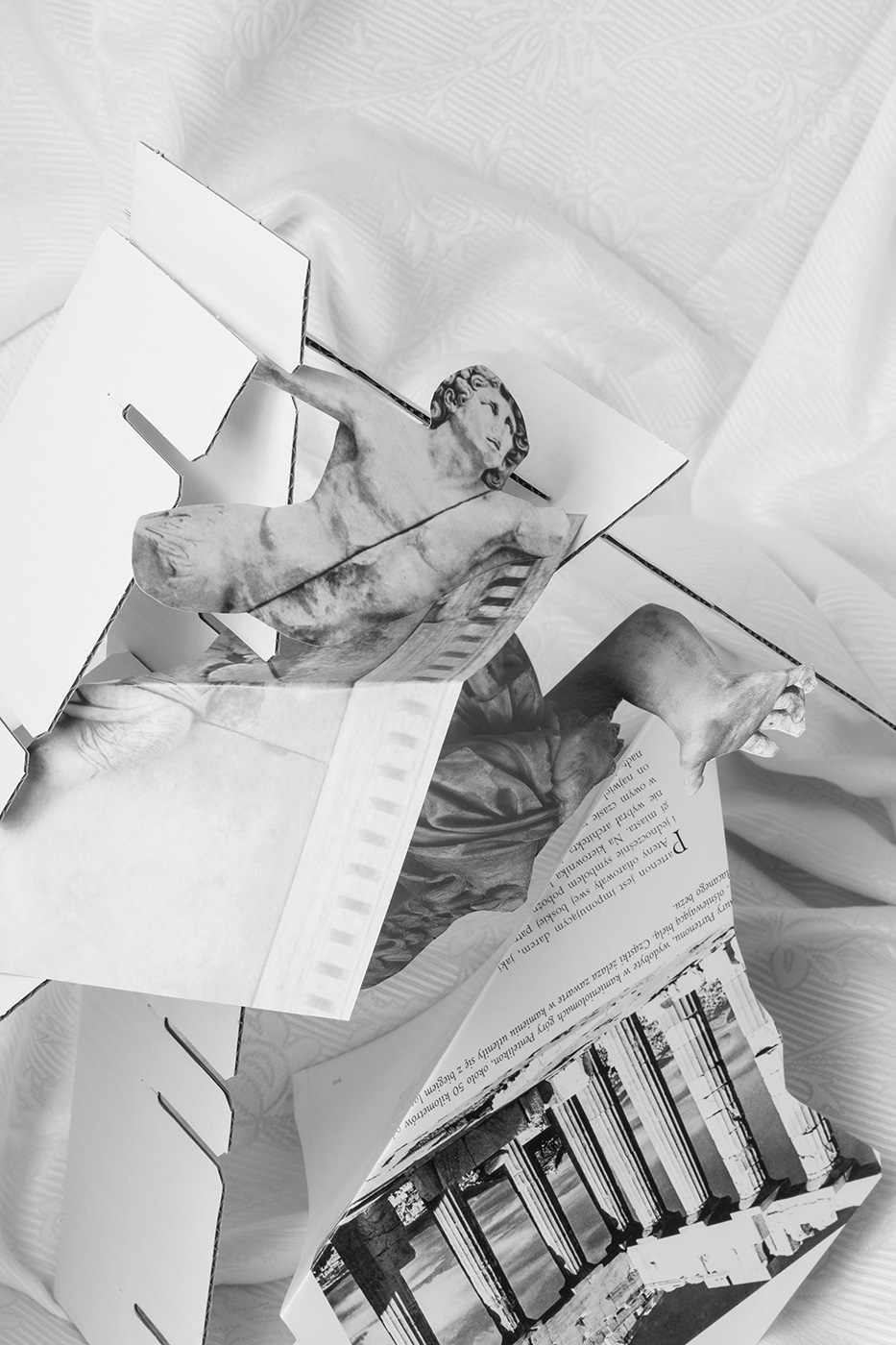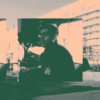1) Please, introduce yourself, tell us a little bit about you.
I am a visual artist based in Warsaw. My main interests focus on painting, installation and photography – in particular, the intersection area between these practices. My artistic research addresses questions of future technology in tune with digital aesthetics and the traditional fine arts.
2) Can you tell us about this particular series?
The Promise of Sublime Worlds started during the course of my doctoral studies, when I was preparing for the final exam in art history. During my research about the ancient statues I discovered many old books with popular sculptures from Antique to Classicism. To spice the process of spaced repetition, I began preparing photographs connected with discussed topics. I tried to confront myself with photographic reproductions of varying quality and scale. My aim was to show my favourite statues as objects, which arouse ambiguous associations. I tried to distort the usual view of sculptures and finally destabilize a natural sense of order. I have employed many methods of image making: taking photographs of textbook illustrations, printing the photographs, physically manipulating the prints, placing them in a tableau, taking photographs of the scene, and then digitally manipulating those photos. On the one hand the cycle draws on my private fascinations and on the other, it is a reflection on the usage of photographic material in post-internet times.
3) Can you describe your work process?
My work employs both digital operations as well as analog photographic processes. The final images are digital, but I think these both processes are very similar. For example, preparing collages is very similar to shooting and selecting what to keep within the frame. The act of photography is so much about what to include and what to crop out when looking, to determine precisely what we want to show to others. I try to examine ways of deconstructing the digital pieces, I like aesthetic of glitches, textures, damaged photographs and defects in the virtual world.
4) What´s your definition of collage?
Playing games with images.
5) Is collage relevant in the context of contemporary arts? why?
The current landscape of contemporary collage is particularly strong. Interdisciplinary approach to the image and using collage-like methods is very common in the constantly transforming culture. Just like the sampling in music. Contemporary art is generally experimenting with the past and the digital present, making use of old and new tools, responding to the mass circulation and consumption of images. It seems to me that the collage still has innovative potential by employing juxtaposition and pictorial disruption to create important and powerful artworks.












